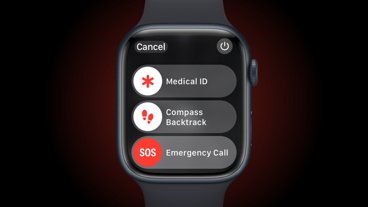In a report released to clients on Tuesday, Oppenheimer analyst Yair Reiner compliments Apple for its sweeping overhaul of its much-neglected desktop business — which includes new iMacs, Mac minis, and Mac Pros — and commended its efforts to engineer and market greener products.
"We believe the product refreshes announced today will bring renewed momentum to Apple's flagging desktop sales," he wrote. "While the much anticipated update did not break new ground in terms of form factor (as we had hoped), the extent of the hardware improvements is a positive surprise."
Reiner, who's modeling Apple to generate second-quarter per-share earnings of $1.02 on revenues of $8.017 billion, made no changes to his estimates but said "pent up demand" for the new systems could drive upside to his March and fiscal year 2009 desktop predictions. He's currently modeling quarterly shipments of 619,000 desktops and 1.437 million notebooks for the three-month period ending March, while his fiscal year estimate has the Mac maker selling 2.776 million desktops and 6.371 million notebooks.
iMacs deliver more for less
The Oppenheimer analyst also used his report Tuesday to perform a side-by-side comparison of the new iMacs against all-in-one desktops from Dell and HP. He found that the mid-range $1,499 model sports faster CPU and RAM while delivering better or comparable graphics than its rivals while still coming in $100 to $250 cheaper.
He noted that even though the iMac lacks a TV tuner, the $60 to $100 upgrade price for that part doesn't negate the full savings.
A comparison of the low-range models on the market gave a slight edge to the HP TouchSmart IQ500t's two-inch larger and touch-sensitive screen, but the iMac wins handily in the processing, memory, and graphics segments. Reiner gave kudos to Apple for its iLife digital lifestyle suite, which comes with every new Mac and lacks a strong rival. The iMac and HP are priced at $1,199, while the Dell XPS One 20 sells for $899 as configured.
A side-by-side comparison of low-end all-in-one desktops | Source: Yair Reiner of Oppenheimer & Co.
Comparing the mid-range 24" iMac ($1,499) with the Dell XPS One 24 ($1,599) and HP TouchSmart IQ800t ($1,749) reveals a similar pattern. While the iMac's screen is just an inch and a half smaller than the TouchSmart's, Apple's all-in-one desktop with Intel and NVIDIA technology again stands out in terms of performance.

A side-by-side comparison of mid-range all-in-one desktops | Source: Yair Reiner of Oppenheimer & Co.
Oppenheimer & Co. is a New York-based investment bank and full-service investment firm in business for more than 125 years. Coincidentally, the firm – located in lower Manhattan's Financial District just blocks away from Wall Street – shares its name with Apple chief financial officer Peter Oppenheimer.
Reiner reiterates his Outperform rating on shares of Apple with a 12- to 18-month price target of $120.
 Zach Spear
Zach Spear







-m.jpg)






 Malcolm Owen
Malcolm Owen
 William Gallagher
William Gallagher

 Wesley Hilliard
Wesley Hilliard



 Christine McKee
Christine McKee




-m.jpg)




218 Comments
while i appreciate articles that debunk the "Apple tax" myth, the fact that they highlight NVIDIA's integrated graphics over discrete graphics is laughable.
I admit that i haven't seen any benchmarks comparing the 2, but if you gave me a choice, I'd always choose discrete over integrated, unless they were multiple generations apart.
They forgot to highlight one slight Dell advantage: 0.7 more megapixels of webcam resolution.
(Of course, the usual webcam broadcast size of 320x240 is only 0.076 megapixels anyway, while a 1024x768 emailable snapshot is 0.79 MP. So even the Mac and HP are overkill at 1.3 MP.)
The iMac 24-inch uses LEDs for backlighting?
I don't think so.
While I agree that you get more value for your money overall with an iMac, this study makes no sense. For one thing, it didn't note anything about the HP having more RAM or the Dell having a bigger webcam. For another thing, the XPS One 20" costs more like $1300, not $900. And the study isn't mentioning if the memory is DDR2 or DDR3. And there isn't mention of RESOLUTION -- I personally don't care as much about 24" vs 25" if the 24" one has the same or greater resolution. And when the only software in the comparison is "iLife" it's looking a bit subjective not objective. IMHO, things like Mac OS X which doesn't get viruses, longer lived hardware, and goodies like a motion sensor or internal serge protector are good things to consider. I mean, the study didn't mention how frequently the various computers need to be repaired. The bottom line really is:
For the same kind of computer, Apple does not charge more, yet they over-deliver on specs and quality of hardware. The study gets the right result, wrong method.
The iMac isn't a bad computer but it's important to realize one salient fact. The iMac is your ONLY solution for Macs $1200-2200. They are Apple's high volume computing line.
If you asked HP or Dell about their AIO they'd say that they serve a portion of their clientele that desire AIO form factor but would probably state their minitower desktops are their high volume.
You can view almost any product through the right lens and get the answer you want.